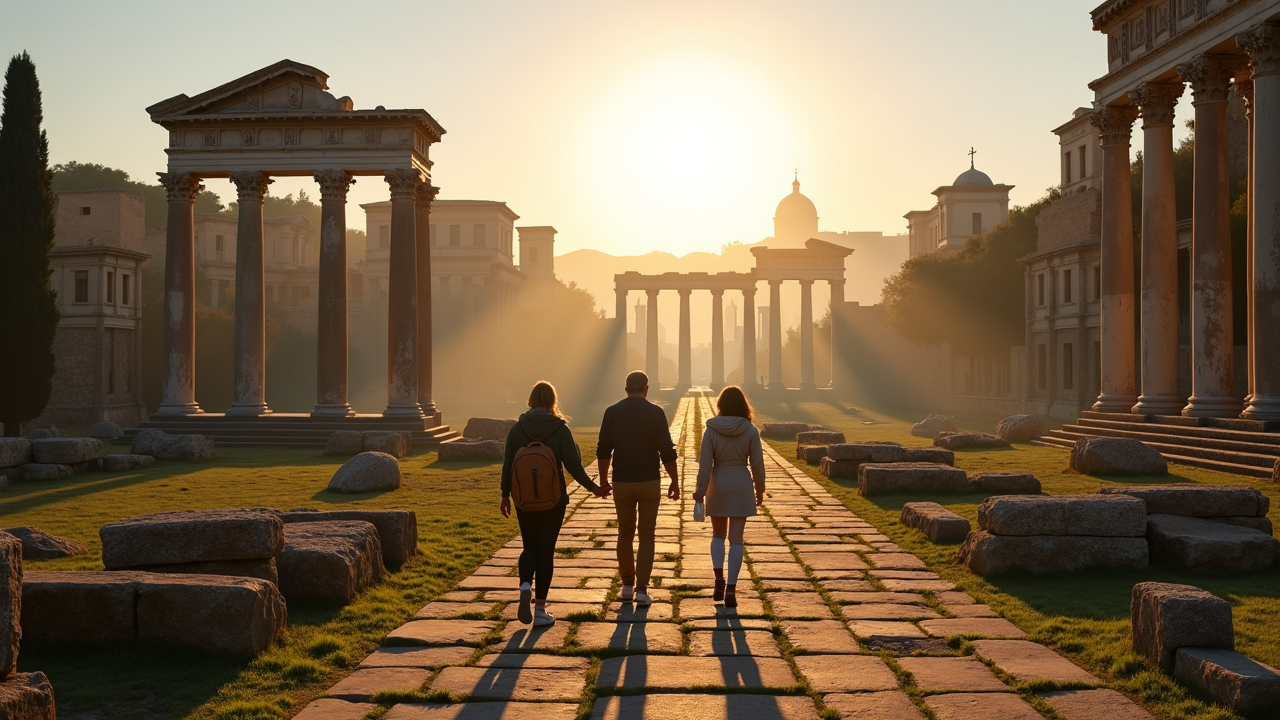Exploring the Rich History of Rome’s Ancient Ruins
Rome, often called the eternal city, is a treasure trove for history lovers and cultural explorers alike. Its centuries-old ruins, majestic temples, and archaeological sites tell stories of a civilization that laid the foundation for much of Western culture. Visiting Rome offers a chance to step back in time and walk the paths once trod by emperors, senators, and everyday Romans. In this post, we’ll take a closer look at some of the most iconic ancient ruins and historic sites that make Rome a must-visit destination for anyone interested in Roman history and Italy travel.
The Colosseum: An Icon of Ancient Rome
Start your journey at the Colosseum, one of the most recognizable landmarks in the world. This massive amphitheater, also known as the Flavian Amphitheatre, was built nearly 2,000 years ago and could hold up to 50,000 spectators. The Colosseum hosted gladiator contests, public spectacles, and other entertainment events that showcased the might and engineering prowess of ancient Rome.
Walking through its arched entrances and exploring the remains of the underground chambers offers a vivid glimpse into the entertainment culture of Roman society. Visitors can learn about the brutal, yet fascinating history of gladiators and the complex engineering that allowed this structure to stand for millennia.
The Roman Forum: Heart of Ancient Rome
Next, venture over to the Roman Forum, the bustling center of political, commercial, and religious activities during the Roman Empire. Once a lively marketplace and gathering place, the Forum is now a sprawling archaeological site filled with ruins of temples, basilicas, and triumphal arches.
Highlights include the Temple of Saturn, which housed the city’s treasury, and the Arch of Titus, commemorating Rome’s victories. Walking amidst these remains, you can almost hear the echoes of ancient speeches and ceremonies that once animated this vibrant public space.
The Pantheon: A Masterpiece of Engineering
The Pantheon remains one of the best-preserved ancient Roman buildings and a testament to Roman engineering skills. Originally built in 27 BC and rebuilt around 120 AD, it is renowned for its massive dome, which remains the largest unreinforced concrete dome in the world.
The oculus at the center allows natural light to illuminate the inner sanctum, creating a captivating atmosphere. Today, the Pantheon functions as a church, but its original purpose was as a temple dedicated to all gods. Its perfect proportions and architectural innovations inspire awe and admiration.
Other Notable Ancient Sites and Attractions
Beyond the major landmarks, Rome is packed with archaeological attractions that reveal glimpses of its glorious past. The Baths of Caracalla, once the largest public baths in Rome, stand as a testament to Roman communal culture.
The Circus Maximus, an ancient chariot racing stadium, hosted spectacular races and events that drew thousands of spectators. Ruins of ancient palaces, aqueducts like the Aqua Claudia, and the remains of villas and baths provide further insight into Roman daily life.
Discovering Rome’s Cultural Heritage
Rome’s rich history is complemented by its vibrant cultural scene today. Museums like the Capitoline Museums and the Vatican Museums showcase priceless artifacts, frescoes, and sculptures that tell stories of antiquity.
Rome also offers a treasure trove of art, architecture, and religious history, making it a perfect destination for those interested in Italy travel, archaeology, and cultural heritage.
Practical Tips for Visiting Ancient Rome
- Plan ahead: Many sites get crowded, especially during peak tourist seasons. Booking tickets in advance can save time.
- Wear comfortable shoes: Exploring ruins involves a lot of walking on uneven surfaces.
- Hire a guide: A knowledgeable guide can enrich your understanding of the history and stories behind each site.
- Visit early or late: To avoid the crowds, try visiting during early mornings or late afternoons.
- Respect the sites: Remember that these ruins are archaeological treasures; avoid touching or climbing on fragile structures.
Conclusion: Why Rome’s Ancient Ruins are Timeless
Walking through Rome’s ancient ruins is like opening a history book that has been beautifully preserved for thousands of years. Each monument and archaeological site narrates a story of power, innovation, and cultural grandeur that continues to captivate visitors today.
Whether you’re a history enthusiast, an archaeology lover, or simply curious about Italy’s past, Rome offers an unforgettable journey into the heart of the Roman empire. So pack your bags, put on your walking shoes, and prepare to explore one of the most historically rich cities in the world. Rome’s ancient ruins await to tell their stories.
Remember, the city is not just about the past—it’s a living museum that continues to inspire and fascinate. Happy exploring!

Leave a Reply